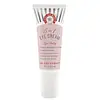What's inside
What's inside
 Key Ingredients
Key Ingredients

 Benefits
Benefits

 Concerns
Concerns

 Ingredients Side-by-side
Ingredients Side-by-side

Water
Skin ConditioningDiisostearyl Malate
EmollientPentaerythrityl Tetraisostearate
EmollientPentylene Glycol
Skin ConditioningAscorbyl Tetraisopalmitate
AntioxidantOrbignya Oleifera Seed Oil
EmollientPhytosterols
Skin ConditioningCaprylic/Capric Triglyceride
Masking3-Glyceryl Ascorbate
AntioxidantGlycerin
HumectantAcrylates/C10-30 Alkyl Acrylate Crosspolymer
Emulsion StabilisingMalpighia Punicifolia Fruit Extract
AntioxidantCaffeine
Skin ConditioningSodium Hyaluronate
HumectantHydrolyzed Sodium Hyaluronate
Skin ConditioningSodium Acetylated Hyaluronate
HumectantSodium Hyaluronate Crosspolymer
HumectantHydrolyzed Plukenetia Volubilis Seed Extract
Emulsion StabilisingLinoleic Acid
CleansingPhospholipids
Skin ConditioningBisabolol
MaskingHelianthus Annuus Extract
EmollientPhysalis Angulata Extract
Skin ProtectingBis-Diglyceryl Polyacyladipate-1
EmollientOryza Sativa Bran Extract
Skin ConditioningTocopherol
AntioxidantHexamidine Diisethionate
EmollientSodium Phytate
Melia Azadirachta Extract
Skin ConditioningMoringa Oleifera Seed Oil
EmollientEthylhexylglycerin
Skin ConditioningPotassium Hydroxide
BufferingRosmarinus Officinalis Leaf Extract
AntimicrobialButylene Glycol
HumectantCitric Acid
BufferingSodium Benzoate
MaskingWater, Diisostearyl Malate, Pentaerythrityl Tetraisostearate, Pentylene Glycol, Ascorbyl Tetraisopalmitate, Orbignya Oleifera Seed Oil, Phytosterols, Caprylic/Capric Triglyceride, 3-Glyceryl Ascorbate, Glycerin, Acrylates/C10-30 Alkyl Acrylate Crosspolymer, Malpighia Punicifolia Fruit Extract, Caffeine, Sodium Hyaluronate, Hydrolyzed Sodium Hyaluronate, Sodium Acetylated Hyaluronate, Sodium Hyaluronate Crosspolymer, Hydrolyzed Plukenetia Volubilis Seed Extract, Linoleic Acid, Phospholipids, Bisabolol, Helianthus Annuus Extract, Physalis Angulata Extract, Bis-Diglyceryl Polyacyladipate-1, Oryza Sativa Bran Extract, Tocopherol, Hexamidine Diisethionate, Sodium Phytate, Melia Azadirachta Extract, Moringa Oleifera Seed Oil, Ethylhexylglycerin, Potassium Hydroxide, Rosmarinus Officinalis Leaf Extract, Butylene Glycol, Citric Acid, Sodium Benzoate
Water
Skin ConditioningGlycerin
HumectantDimethicone
EmollientC12-15 Alkyl Benzoate
AntimicrobialSodium Polyacrylate
AbsorbentEthylhexyl Palmitate
EmollientSilica
AbrasiveEnteromorpha Compressa Extract
Skin ProtectingPalmitoyl Tripeptide-1
Skin ConditioningPalmitoyl Tetrapeptide-7
Skin ConditioningSodium PCA
HumectantAlpha-Arbutin
AntioxidantNiacinamide
SmoothingBisabolol
MaskingPhenyl Methicone
EmollientGlycyrrhiza Glabra Root
Skin ConditioningChrysanthemum Parthenium Extract
Skin ConditioningCamellia Sinensis Leaf Extract
AntimicrobialHydrogenated Lecithin
EmulsifyingCaprylyl Methicone
Skin ConditioningButylene Glycol
HumectantHydroxyethyl Acrylate/Sodium Acryloyldimethyl Taurate Copolymer
Emulsion StabilisingHydrogenated Phosphatidylcholine
EmulsifyingCaesalpinia Spinosa Gum
Skin ConditioningSodium Isostearate
CleansingPolysorbate 60
EmulsifyingSodium Lactate
BufferingCarbomer
Emulsion StabilisingPolysilicone-11
Glyceryl Polyacrylate
Polysorbate 20
EmulsifyingPhenoxyethanol
PreservativeSodium Hydroxide
BufferingXanthan Gum
EmulsifyingPotassium Sorbate
PreservativeSodium Benzoate
MaskingWater, Glycerin, Dimethicone, C12-15 Alkyl Benzoate, Sodium Polyacrylate, Ethylhexyl Palmitate, Silica, Enteromorpha Compressa Extract, Palmitoyl Tripeptide-1, Palmitoyl Tetrapeptide-7, Sodium PCA, Alpha-Arbutin, Niacinamide, Bisabolol, Phenyl Methicone, Glycyrrhiza Glabra Root, Chrysanthemum Parthenium Extract, Camellia Sinensis Leaf Extract, Hydrogenated Lecithin, Caprylyl Methicone, Butylene Glycol, Hydroxyethyl Acrylate/Sodium Acryloyldimethyl Taurate Copolymer, Hydrogenated Phosphatidylcholine, Caesalpinia Spinosa Gum, Sodium Isostearate, Polysorbate 60, Sodium Lactate, Carbomer, Polysilicone-11, Glyceryl Polyacrylate, Polysorbate 20, Phenoxyethanol, Sodium Hydroxide, Xanthan Gum, Potassium Sorbate, Sodium Benzoate
 Reviews
Reviews

Ingredients Explained
These ingredients are found in both products.
Ingredients higher up in an ingredient list are typically present in a larger amount.
Bisabolol is famous for its skin soothing properties. It does this by blocking inflammatory signals, helping to reduce your body's reaction to irritation.
This ingredient also interferes with the process of hyperpigmentation. This can help with reducing dark spots and uneven tone.
Bisabolol is an antioxidant. Antioxidants help fight free-radicals. Free-radicals are molecules that may damage your skin cells. By fighting these free-radicals, Bisabolol may slow down signs of aging.
Studies have shown Bisabolol to have antimicrobial properties and may be a fungicide. These properties help preserve a product's shelf life.
All these properties makes bisabolol a great skin barrier helper ingredient.
Bisabolol also helps the absorption of other ingredients.
Note: Synthetic Bisabolol has been shown to be less effective.
Learn more about BisabololButylene Glycol (or BG) is used within cosmetic products for a few different reasons:
Overall, Butylene Glycol is a safe and well-rounded ingredient that works well with other ingredients.
Though this ingredient works well with most skin types, some people with sensitive skin may experience a reaction such as allergic rashes, closed comedones, or itchiness.
Learn more about Butylene GlycolGlycerin is already naturally found in your skin. It helps moisturize and protect your skin.
A study from 2016 found glycerin to be more effective as a humectant than AHAs and hyaluronic acid.
As a humectant, it helps the skin stay hydrated by pulling moisture to your skin. The low molecular weight of glycerin allows it to pull moisture into the deeper layers of your skin.
Hydrated skin improves your skin barrier; Your skin barrier helps protect against irritants and bacteria.
Glycerin has also been found to have antimicrobial and antiviral properties. Due to these properties, glycerin is often used in wound and burn treatments.
In cosmetics, glycerin is usually derived from plants such as soybean or palm. However, it can also be sourced from animals, such as tallow or animal fat.
This ingredient is organic, colorless, odorless, and non-toxic.
Glycerin is the name for this ingredient in American English. British English uses Glycerol/Glycerine.
Learn more about GlycerinSodium Benzoate is a preservative. It's used in both cosmetic and food products to inhibit the growth of mold and bacteria. It is typically produced synthetically.
Both the US FDA and EU Health Committee have approved the use of sodium benzoate. In the US, levels of 0.1% (of the total product) are allowed.
Sodium benzoate works as a preservative by inhibiting the growth of bacteria inside of cells. It prevents the cell from fermenting a type of sugar using an enzyme called phosphofructokinase.
It is the salt of benzoic acid. Foods containing sodium benzoate include soda, salad dressings, condiments, fruit juices, wines, and snack foods.
Studies for using ascorbic acid and sodium benzoate in cosmetics are lacking, especially in skincare routines with multiple steps.
We always recommend speaking with a professional, such as a dermatologist, if you have any concerns.
Learn more about Sodium BenzoateWater. It's the most common cosmetic ingredient of all. You'll usually see it at the top of ingredient lists, meaning that it makes up the largest part of the product.
So why is it so popular? Water most often acts as a solvent - this means that it helps dissolve other ingredients into the formulation.
You'll also recognize water as that liquid we all need to stay alive. If you see this, drink a glass of water. Stay hydrated!
Learn more about Water